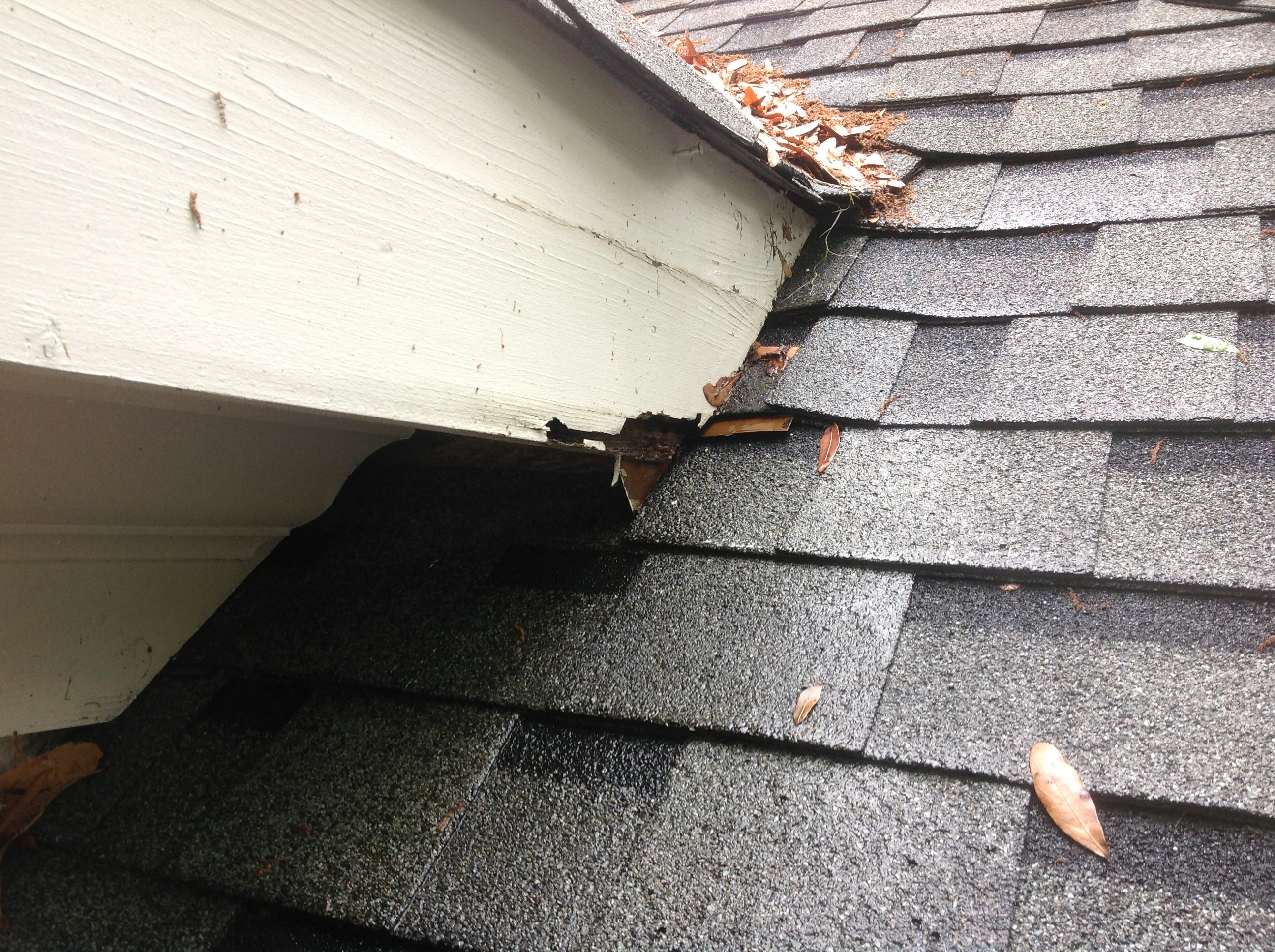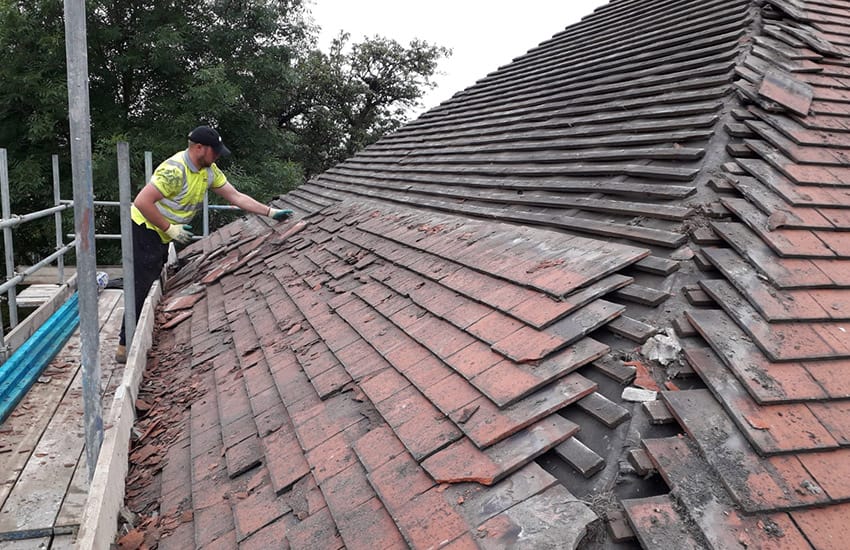Checking Out the Different Sorts Of Roof Coverings: Which One Is Ideal for Your Home?
When thinking about the myriad types of roofings available, it is vital to evaluate exactly how each choice lines up with your home's one-of-a-kind demands, consisting of environment problems, visual choices, and structural functionality. From the traditional gable roofing that efficiently networks rainwater to the modern level roof offering city adaptability, each style offers distinct benefits and challenges.
Saddleback Roof
Saddleback roofs, characterized by their triangular form and sloping sides, are a popular choice amongst homeowners looking for both visual appeal and functionality. This roofing design successfully permits for reliable water runoff, minimizing the risk of water merging and subsequent damages. Additionally, the steep inclines develop enough attic room area, which can be made use of for storage or perhaps exchanged living areas.
Among the key benefits of gable roof coverings is their ability to hold up against harsh weather. The style helps in reducing wind resistance, making them particularly suitable for locations vulnerable to tornados. Moreover, saddleback roofs can be created utilizing a range of materials, including roof shingles, ceramic tiles, and steel, offering property owners with versatility in design and budget.
From an architectural perspective, gable roofing systems can enhance the visual allure of a home, using a timeless and classic look. In general, gable roofing systems stay a preferred option due to their equilibrium of practicality and design, appealing to a large array of homeowners.
Apartment Roofs
While usually forgotten in favor of more conventional roofing system designs, level roof coverings supply special advantages that satisfy details building demands and modern-day style choices. These roofing systems are defined by their marginal pitch, permitting reliable use of space, specifically in city environments where optimizing square video footage is crucial.
One significant advantage of flat roof coverings is their flexibility. They can be made use of as extra living areas, such as roof gardens, patios, or photovoltaic panel installments, enhancing the capability of a home. Moreover, level roofing systems are normally simpler and safer to navigate throughout upkeep, helping with fixings and evaluations without the obstacles presented by steep slopes.
Level roofings can additionally be a lot more cost-effective in terms of materials and installment. With a simpler style, they typically need less sources, equating into lower labor prices. Nonetheless, it's vital to take into consideration drain and waterproofing, as flat roofing systems can be prone to merging water if not effectively created.

Hip Roofing Systems
Hip roofing systems stand apart for their stylish design and architectural integrity, making them a popular selection among home owners. Defined by slopes on all 4 sides, hip roofings offer a healthy aesthetic that matches numerous building designs - roof repair oahu. The balanced nature of these roofs aids to distribute weight evenly, enhancing security and resilience
Among the essential advantages of hip roofings is their ability to withstand severe weather. The sloped surface areas assist in effective water drainage and snow runoff, reducing the risk of leakages and structural damages. In addition, the style reduces wind resistance, making hip roofs less vulnerable to wind uplift compared to other roof covering types.


Shed Roof Coverings
Lost roofs, as opposed to the complexity of hip roofing systems, provide a structured and minimalist design that interest modern-day visual appeals. Defined by a single sloping surface area, dropped roofing systems are frequently utilized in contemporary design, garden sheds, and various other functional structures. This simplicity not just enhances visual allure yet additionally permits reliable water runoff, making them ideal for various environments.
One of the main benefits of shed roof coverings is their cost-effectiveness. With less materials required and a simple setup process, homeowners can conserve both money and time. The style also allows the unification of huge windows or skylights, advertising all-natural light and producing large interiors.
Nevertheless, it is important to consider the prospective disadvantages, consisting of restricted insulation options and the demand for cautious layout to prevent excessive heat buildup. Additionally, shed roofs might not mix seamlessly with conventional style, which could be a worry for some house owners.
Eventually, lost roofs provide a useful and trendy roofing option for those looking for modernity and performance. When choosing a roofing system type, reviewing personal practical demands and visual preferences will lead home owners to the most effective selection for their one-of-a-kind requirements.
Mansard Roofs
Mansard roof coverings, characterized by their distinctive four-sided design, are a hallmark of French architecture that combines elegance with functionality. This architectural design features 2 slopes on each side, with the reduced incline being steeper than the upper one. The unique arrangement enables extra living area in the upper levels, making it a suitable choice for property owners seeking to make the most of read here usable area without increasing the building's impact.
Among the substantial advantages of a mansard roof covering is its convenience. It can be adapted to different architectural styles, from standard to contemporary, improving the aesthetic charm of any type of home. In addition, the adequate area created under the roof can quickly suit dormer home windows, which permit all-natural light and air flow, more enhancing the comfort of the living area.
However, prospective house owners ought to consider the maintenance requirements linked with mansard roofing systems. Installation expenses may be greater click this link contrasted to simpler roof styles due to the complexity of construction.
Conclusion
To conclude, the selection of a suitable roofing type rests on private demands, environment considerations, and aesthetic choices. Each roof style provides special benefits, such as the efficiency of saddleback roofs, the modern charm of shed roofs, and the stability of hip roofing systems. Additionally, flat roof coverings provide functionality for city settings, while mansard roofing systems supply additional home despite greater installation costs. Eventually, a comprehensive evaluation of these aspects will certainly direct homeowners in making an educated choice.
From the classic gable roofing that efficiently networks rainwater to the modern-day level roof offering city flexibility, each design provides distinctive benefits and challenges (roof repair oahu). Additionally, the design decreases wind resistance, making hip roofs much less at risk to wind uplift contrasted to other roof covering kinds
Dropped roof coverings, in contrast to the intricacy of hip roof coverings, offer a minimalist and streamlined style that charms to modern-day aesthetics. Each roof Visit Your URL design presents one-of-a-kind benefits, such as the efficiency of gable roofings, the modern allure of shed roof coverings, and the security of hip roofings. Flat roofs provide usefulness for metropolitan environments, while mansard roofs give additional living area in spite of greater installation expenses.